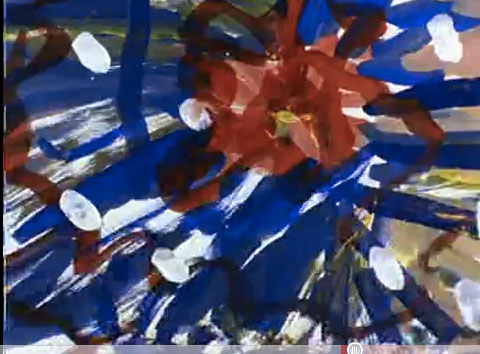
I was pleased to see a story on my friend Shamus Culhane, by Michael Cieply, in The New York Times. It’s on a new scholarly article by Tom Klein on Shamus’s 1940s Lantz cartoons, and particularly on the modern-art like experiments in a few of the films, such as Woody Dines Out and The Loose Nut.
The tone of the article is a bit odd: It makes it sound as if Klein uncovered Shamus secretly inserting subliminal messages into the films so clever that they went unnoticed for almost seventy years. But if you’ve read Shamus’s autobiography, Talking Animals and Other People–and if you haven’t, you really ought to do so right this very moment–he dwells on the fact that he got extremely experimental and artsy with the Lantz cartoons. And the modern-art “mini-films” that Klein writes about, while brief, aren’t subliminal. In fact, they’re quite striking and look nothing like anything anyone else was doing in Hollywood animation at the time.
Moviegoers in the forties might not have paid attention. But cartoon buffs who revisit these films today know that Shamus brought a highbrow approach to what would otherwise have been pretty mundane shorts.
And I still can’t figure out why the article segues into a discussion of caricatures of real people in recent Disney animated features, such as a cameo by Charles Solomon in Fantasia 2000.
Tom Klein’s article isn’t available for free on the Web as far as I know, but it’s possible to purchase it as a downloadable PDF. It’s excellent.

A director would never have worked out a drawing this specific, would he?